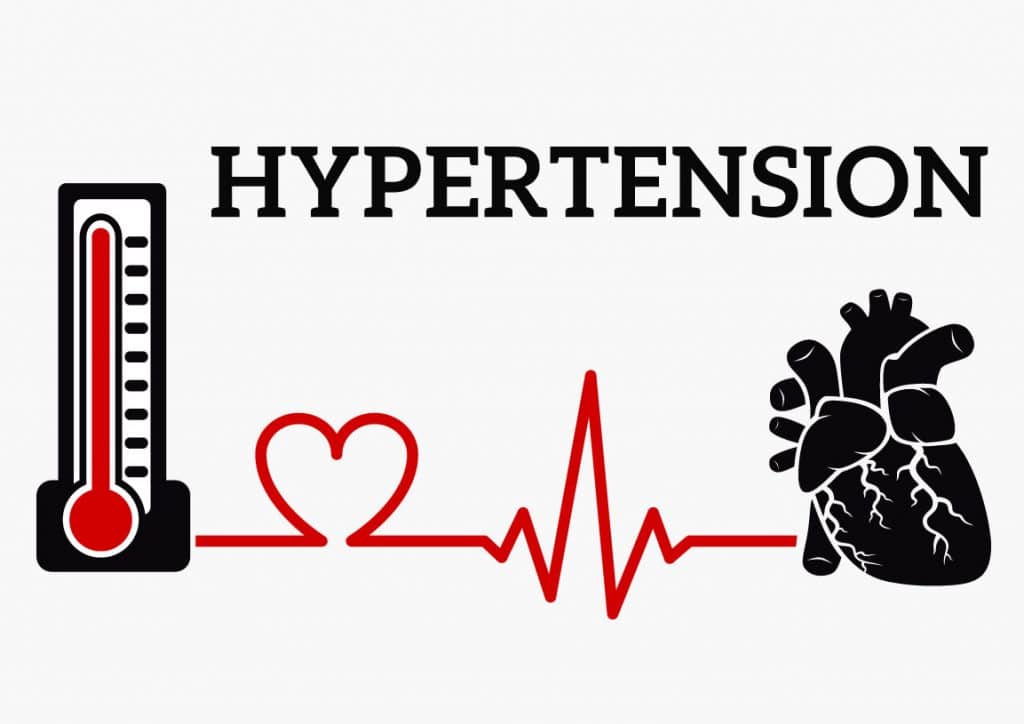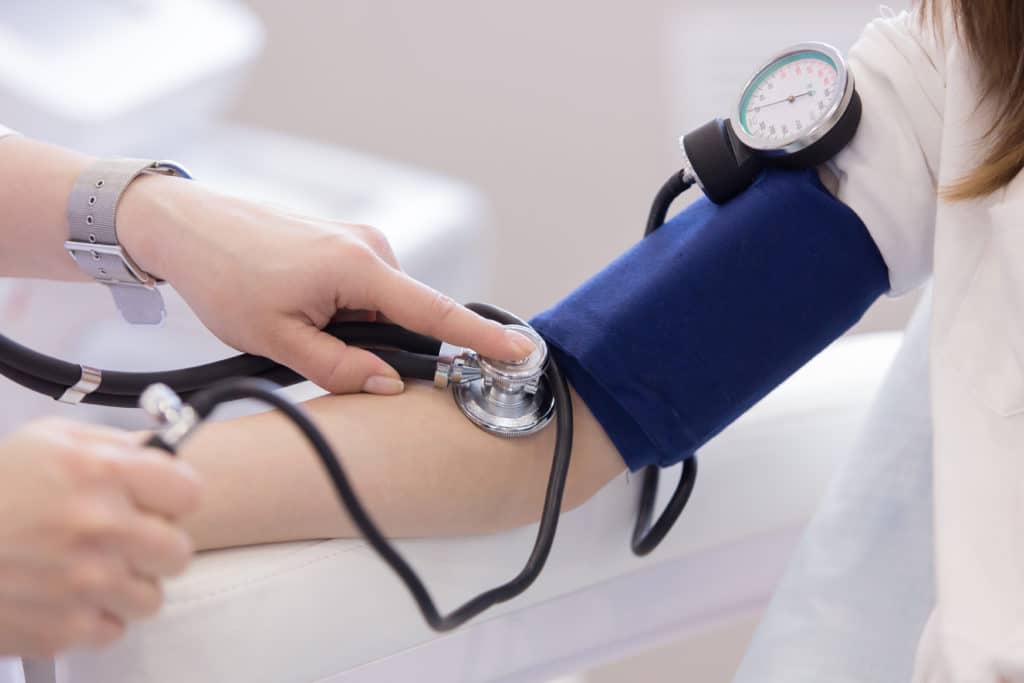How Hypertension Increases the Risk of Type 2 Diabetes Complications?
- admin
- October 24, 2024
- 9:37 am
- No Comments

It is no secret that both hypertension (high blood pressure) and Type 2 diabetes are heavy hitters in the world of chronic health conditions.
Unfortunately, these two ailments are more than just solo performers.
When they team up, they can form a deadly duo, wreaking havoc on various organs and increasing the risk of complications.
In this article, we shall delve into how hypertension can worsen the complications of Type 2 diabetes, exploring everything from the biology behind it to practical tips on how to manage these conditions effectively.
Article Index:
- Hypertension and Type 2 Diabetes: The Deadly Duo
- How Hypertension Elevates Blood Sugar Complications
- The Role of Blood Vessels in the Relationship Between Hypertension and Diabetes
- Real-Life Example: How Type 2 Diabetes and Hypertension Impacted John’s Health
- Hypertension’s Impact on Diabetic Kidney Disease
- How Blood Pressure Control Can Prevent Cardiovascular Issues in Diabetics
- The Connection Between Insulin Resistance and Hypertension
- Managing Both Conditions Together: A Balanced Approach
- FAQs on Hypertension and Type 2 Diabetes
- Conclusion: Striking a Balance Between Blood Sugar and Blood Pressure
Hypertension and Type 2 Diabetes: The Deadly Duo
Hypertension and Type 2 diabetes often go hand-in-hand.
In fact, around two-thirds of people with Type 2 diabetes also have high blood pressure.
This combination significantly raises the risk of complications such as heart disease, kidney damage, and even stroke.
But why do these two conditions have such a bad rapport?
When it comes to hypertension and Type 2 diabetes, high blood pressure exacerbates the damage caused by elevated blood glucose levels.
The two conditions together increase the workload on the heart and arteries, making it harder for blood to circulate properly.
As a result, this worsens the damage to the kidneys, eyes, nerves, and cardiovascular system, often leading to severe complications.
The challenge of managing both conditions effectively makes it essential to understand how they influence one another.
How Hypertension Elevates Blood Sugar Complications?
Hypertension does more than just raise blood pressure—it also accelerates complications tied to diabetes.
When blood pressure is consistently high, it damages the delicate blood vessels in the body.
In diabetes mellitus type 2 and hypertension, the body’s ability to use insulin is already compromised, making it harder to control blood sugar levels.
When high blood pressure is added to the mix, it speeds up the progression of diabetes-related damage.
A 2018 study in the Journal of Hypertension revealed that high blood pressure worsens insulin resistance, meaning that the body’s cells do not respond as well to insulin, further elevating blood sugar levels.
This vicious cycle can lead to severe complications like nerve damage (neuropathy), vision loss, and kidney disease.
The Role of Blood Vessels in the Relationship Between Hypertension and Diabetes
Think of your blood vessels as the highways through which essential nutrients and oxygen flow.
When you have both type two hypertension and diabetes, the damage to these highways becomes more severe.
High blood glucose levels already weaken blood vessels over time, and high blood pressure puts even more strain on them.
This can cause the blood vessels to harden, narrow, or rupture.
According to a study by Diabetes Care, the combination of hypertension and diabetes significantly raises the risk of cardiovascular events, like heart attacks and strokes, by 50%.
Keeping blood vessels healthy becomes a critical part of managing both conditions and preventing complications.
Real-Life Example: How Type 2 Diabetes and Hypertension Impacted John’s Health?
Meet John, a 55-year-old man diagnosed with both Type 2 diabetes and hypertension.
At first, he focused primarily on controlling his blood sugar levels, thinking that was the biggest threat to his health.
However, after years of uncontrolled hypertension, John started to experience complications such as blurry vision, frequent urination, and fatigue.
After a visit to his doctor, he learned that his kidneys were starting to show signs of damage due to the combination of diabetes and high blood pressure.
John’s story is common. Many people with type 2 diabetes with hypertension ICD 10 face a similar battle, with blood pressure exacerbating the symptoms and complications of diabetes.
Realizing that both conditions needed equal attention, John made lifestyle changes and worked closely with his healthcare provider to manage his blood pressure alongside his blood sugar levels.
Hypertension’s Impact on Diabetic Kidney Disease
One of the scariest complications of diabetes is kidney disease, which can lead to kidney failure if left untreated.
Hypertension accelerates this process.
When blood pressure is high, it damages the kidneys’ filtering system, making it harder for them to remove waste from the blood.
This is why blood pressure for Type 2 diabetes needs to be closely monitored, especially in individuals with a high risk of kidney disease.
A study in the American Journal of Kidney Diseases found that managing high blood pressure can slow the progression of kidney disease in diabetics.
In fact, controlling blood pressure is just as important as controlling blood sugar when it comes to protecting the kidneys.

How Blood Pressure Control Can Prevent Cardiovascular Issues in Diabetics?
It is well known that cardiovascular disease is one of the leading causes of death in people with Type 2 diabetes.
Hypertension adds fuel to the fire by placing additional strain on the heart.
The heart has to work harder to pump blood through the body when blood pressure is high, leading to an increased risk of heart attacks and strokes.
Shadow health hypertension and type 2 diabetes patients should focus on both lowering blood pressure and improving blood glucose control to reduce their cardiovascular risks.
According to The Lancet Diabetes & Endocrinology, lowering blood pressure by just 10mm Hg in patients with diabetes can reduce the risk of cardiovascular events by 12%.
The Connection Between Insulin Resistance and Hypertension
Now, let us talk about the underlying connection between hypertension and diabetes.
Insulin resistance, a hallmark of Type 2 diabetes, plays a significant role in the development of high blood pressure.
As the body becomes resistant to insulin, it triggers a cascade of effects that include an increase in sodium retention and fluid volume, which leads to higher blood pressure.
In short, insulin resistance and hypertension are deeply intertwined.
Semaglutide hypertension studies have shown that managing insulin resistance can improve both blood sugar levels and blood pressure.
Medications like empagliflozin, known for managing blood sugar, have also been shown to help lower blood pressure in people with diabetes.
Managing Both Conditions Together: A Balanced Approach
So, how do you manage both hypertension and Type 2 diabetes without feeling overwhelmed?
It is all about finding balance.
Here is a practical approach:
- Medication: Speak to your healthcare provider about medications like empagliflozin and blood pressure treatments that can manage both conditions. Some medications, like semaglutide, offer benefits for both blood sugar and blood pressure control.
- Diet: A diet low in sodium and sugar, rich in fruits and vegetables, can go a long way. The DASH diet is highly recommended for people dealing with both conditions.
- Exercise: Regular exercise helps lower both blood pressure and blood sugar, improving insulin sensitivity and reducing cardiovascular risk.
- Stress management: High stress levels can worsen both blood pressure and blood sugar. Consider practices like yoga for blood sugar control, meditation, or deep breathing exercises.
FAQs on Hypertensions and Type 2 Diabetes
Q-1: Why Does High Blood Pressure Worsen Type 2 Diabetes Complications?
A-1: Hypertension and high glucose team up against your blood vessels. Pressure damages the vessel lining, while elevated glucose fuels inflammation and oxidative stress. Together they stiffen arteries, speed plaque buildup, and starve tissues of oxygen. That “double hit” accelerates both large-vessel (heart and brain) and small-vessel (eyes, kidneys, nerves) harm—so managing both numbers, not just glucose, is the real secret sauce.
Q-2: Which Complications Get Worse When Both Conditions Co-Exist?
A-2: The big ones are heart attack and stroke (macrovascular disease), diabetic kidney disease with rising urine albumin, and diabetic retinopathy that can threaten vision. You can also see faster nerve damage, peripheral artery disease, and higher heart-failure risk. In short: uncontrolled blood pressure turns the usual diabetes complications from “possible” to “more likely and sooner.”
Q-3: What Blood Pressure Numbers Should People With Type 2 Aim For?
A-3: A common target is under 130/80 mmHg if it’s safe for you. Some folks—especially older adults or those prone to dizziness—may use a less aggressive goal (for example, under 140/90 mmHg). Home monitoring helps: take two readings morning and evening for a week, relax five minutes before measuring, and average the results with your clinician to set a personalized target.
Q-4: Does Tighter Blood Pressure Control Really Change Outcomes?
A-4: Yes—especially for stroke and microvascular complications. Lowering systolic pressure by even 10 mmHg links to meaningful drops in cardiovascular events and slower kidney and eye damage. That said, pushing extremely low can add side effects (lightheadedness, falls, electrolyte shifts). The sweet spot balances risk reduction with how you feel day to day—so personalize, don’t just chase a number.
Q-5: What Practical Steps Lower My Risk Right Now?
A-5: Pair glucose management with BP basics: check home BP; cut sodium (aim ~1.5–2 g/day); move most days (target 150 minutes/week); limit alcohol; and maintain a healthy weight. Medications matter too—ACE inhibitors or ARBs are go-to options when kidney changes are present; calcium-channel blockers or thiazide-like diuretics are often added. Ask about SGLT2 inhibitors or GLP-1 RAs for added heart-kidney benefits, and keep up with yearly eye, kidney, and foot checks.
Striking a Balance Between Blood Sugar and Blood Pressure
Hypertension and Type 2 diabetes are a double-edged sword, but they can be managed effectively with the right strategies.
From understanding how high blood pressure worsens diabetes complications to taking a balanced approach to medication, diet, learning how to lower blood sugar naturally and lifestyle, the key is to focus on both conditions equally.
Keep your blood sugar levels in check while also keeping an eye on your blood pressure—it is a delicate balancing act, but it is essential for preventing complications and living a healthy, fulfilling life.
By making small, consistent changes in your daily routine and working closely with your healthcare provider, you can manage both hypertension and Type 2 diabetes, reducing the risk of severe complications and improving your overall quality of life.
Remember, you are in control, and taking charge of your health is the first step toward a healthier future.
References: